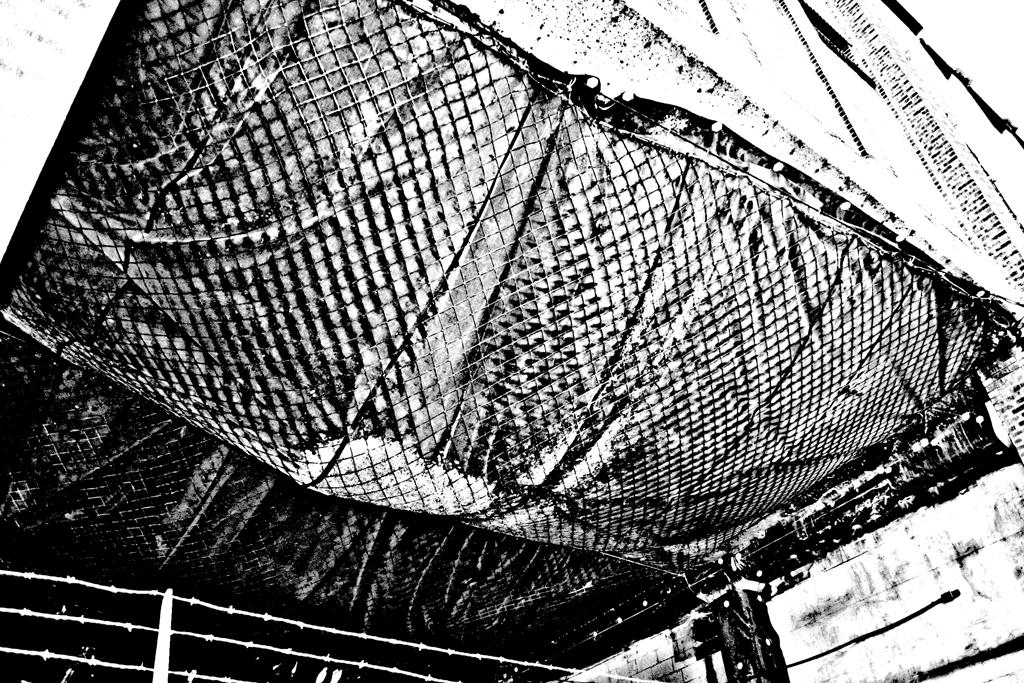
Open Studio: Gowanus Canal
A proposal, from 2008, for a sculpture symposium grounds using the canopy of the F & G train line viaduct at the Gowanus Canal, in Brooklyn, NY.
… the connection between apparatus and death also reasserted itself in such common phrases as apparecchiare la tavola, meaning to set a table, to prepare it, to arrange it. From this point on I came to regard architecture as the instrument which permits the unfolding of a thing.
[…] I am not familiar with Holy Week in Seville, but in churches and museums I have seen the statues and the carts, the Virgins and the Christs, and these things too seem like the architectonic instruments of an action that is pre-arranged, yes, but still unforeseeable.
[…] cities, even if they last for centuries, are in reality great encampments of the living and the dead where a few elements remain like signals, symbols, warnings. When the holiday is over, the elements of the architecture are in tatters, and the sand again devours the street. There is nothing left to do but resume, with persistence, the reconstruction of elements and instruments in expectation of another holiday.
Aldo Rossi, A Scientific Autobiography (1981)




Like Rossi’s encampment of the living and the dead, the intersection of the Gowanus Canal and the IND Culver Line Viaduct in Brooklyn, NY, is a place where the city is taken apart into mounds of debris, and simultaneously a place where mounds of raw material are gathered for new construction.
The viaduct raises the F and G train lines above the poor drainage of the former tidal marsh, crossing the canal at a height of 90ft above ground. The structure has been wrapped in black fabric that is held in place by steel hoops and studded with bright silver anchors. The wrapping is to keep the riveted steel structure from shedding its skin of concrete.


Both the viaduct and the toxic canal are industrial manifestations of the former marsh. Through them, the activity of construction and the forces of decay are played out simultaneously, and do not seem to be at odds with each other.
Yet as the industrial establishments such as the concrete plant, scrap metal yards, fuel oil depots, lumber yards, stone yards, garment factories decamp from the banks of the canal, replaced by residential condiminiums, and art and music studios; and as the pollution of the canal is remediated through the efforts of the community; the blind, fast and uni-directional development of gentrification threatens to once again suppress the agency of the former marsh.
The intersection of the canal and the viaduct anticipates a programmatic intersection between the dilapidated industrial zone along the canal and the intermittent line of public spaces that have been established below the viaduct. Coupled with rain falling from the sky, running over the brownfields and into the canal, the concrete rubble falling from the viaduct is an opportunity to build this middle zone of the urban landscape as the connection between a landscape above and a landscape below.

The Open Studio is a symposium grounds, public space and work yard for slow but constant construction and decomposition, interrupted and possibly re-directed by conversation. It is a place that does not assume a community but anticipates a gathering of individuals, negotiating between the individual act of imagining and the collective act of constructing the city. As a collector for soil, seeds and nutrients from the storm and tidal waters, the Studio aims to reveal the potential for life within the toxic ground. As a place to envision and construct the future of the city, it aims to do so largely by excavating and tying together the disparate orders, fragmentary artifacts, raw material and debris present on the site.







